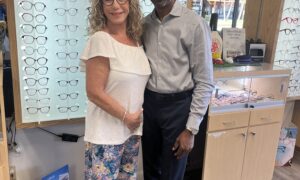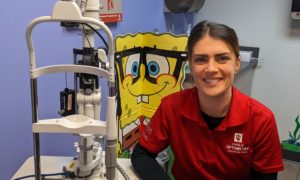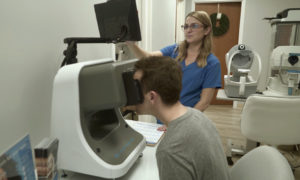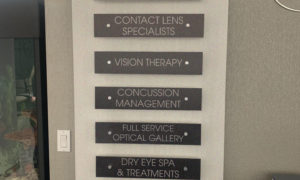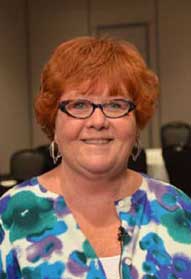
Make a Habit
of Changing Habits
By Polly Hendricks, OD
Years ago, when I first entered private practice, I regularly committed what I now consider to be the “three cardinal sins” of optometry practice:
Three Cardinal Sins of Optometry Practice
- Assume the patient is happy. I assumed that my patients were happy if they didn’t complain.
- Don’t ask questions. I failed to ask patients probing questions and identify contact lens dropouts.
- Present too many options. I overstocked too many different brands of contact lenses, instead of specializing in the most innovative and best designs.
- The real wake-up call for me was the introduction of daily disposable contact lenses. Initially, I didn’t include them in my presentation to patients. Eventually, I realized I was losing patients to practices that did.
Since that time, I’ve tried to be an early adopter of innovative technology in contact lenses. I’ve also been more selective in the contact lenses I prescribe. Further, I’ve also gotten our practice staff on board with these changes.
Today, our practice may not carry all the contact lens brands on the market, but we make sure to carry the most innovative and best designs. We try to anticipate market trends and patient demand, and make sure we have the right products in stock. As a result, our inventory is smaller, and our overall contact lens purchasing bill is down more than 10 percent.
We also have improved a key aspect of the patient experience. As a team, our staff has examined and altered what had become a routine habit in how we discussed contact lenses with patients.
Introduce Innovation, Don’t Wait To Be Asked
As optometrists, we should be the ones presenting innovative technolo- gy and new options in contact lenses. It’s a sad fact that often we are not.
In a recent survey of contact lenses wearers,1 97 percent said they are interested in trying new contact lens technology–yet only 75.6 percent expect to receive an update to their contact lens prescription during their routine office visit. It’s our mistake if we wait to be asked.
Here, I realized a need for a habit change in our practice. Before we could change our habits in how we presented contact lenses to my patients, we had to understand how they developed.
The Habit Loop in Optometric Practice
Charles Duhigg, author of The Power of Habit, describes a three-part process he calls the “Habit Loop.”2 In optometry, it often plays out as follows:
Cue: A “cue” tells your brain that it’s time to start a specific routine. Typically, a patient in the exam chair asks about contact lenses.
Routine: Then, your brain essentially shifts into autopilot and begins the “routine.” In many cases, this triggers a rote speech by the doctor about contact lens features, care regimens and lens comfort.
Reward: Finally, there is a reward, which tells your brain that this routine is okay. This might be a “satisfied” patient leaving the practice for another year with a supply of the same contact lenses they have been wearing in hand.
Change the Routine, Improve the Outcome
We need to examine that habit loop, with thought to changing the routine to improve the reward. While
our patient may be satisfied leaving the practice with the same contact lenses they have worn for years, they may not be leaving with the best product that suits their needs. Perhaps they have not fully expressed their challenges of wearing contact lenses or their interest in trying new technology—or perhaps we have not heard them on these vital points.
If we, as practitioners, fall short of asking probing questions and providing innovative solutions to patient needs and wants, our patients may become contact lens drop-outs or contact lens wearers who wear their lenses less and less.
We need to assess our exam room habits, with a concentration on providing the best care and options for the patient. Here are several areas in which our “routine” can be made more innovative.
Ask in-depth questions. With all patients, ask questions about work, lifestyle and their experience and expectations for vision correction. Your aim is to determine how best you can serve their needs.
Aim higher than satisfaction. If our starting point is to confirm “satisfaction,” the patient likely will remain in their present optical solution. If our aim is to provide the best vision correction or eye health options, we need to ask questions differently. Instead of asking, “Are your contact lenses comfortable?” we can ask, “How would you rate the comfort of your contact lenses on a scale from 1-10?” A candid response from the patient gives us far more to work with.
Suggest innovative options. Once the patient knows about options that may improve visual performance or improve lens comfort, the stage is set to introduce superior, innovative options that may improve their experience.
By introducing innovative contact lens designs and using innovative exam technology, you and your staff can exceed patient expectations.
In the end, developing successful habits that advance patient care and the practice is its own reward.
References
- 1. Rah, Marjorie J., OD,PhD, et al. Interest and Acceptance of a New Contact Lens Technology in Today’s Practice. Present at: American Optometric Association annual meeting; Seattle, WA: June 24-28, 2015; Poster #6.
- 2. Duhigg, Charles, The Power of Habit, Random House, 2012.
US/ZUS/15/0255





